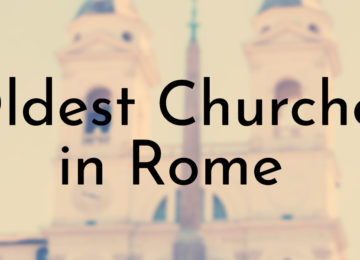India is known for many things, like its diverse cuisine, large population, and rich culture. It’s also known for the various religions that are practiced in it, one of which is Hinduism. India is home to millions of temples all over the country, but did you know that there are several Hindu temples all over the world as well?
In this article, we’re going to look at some of those temples, and examine the oldest ones among them. Let’s get right into it.
7. Arya Diwaker
Year founded: 2001
Location of temple: Paramaribo, Suriname
God that the temple is dedicated to: Lord Shiva
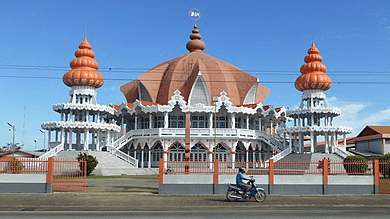
The Arya Diwaker temple was built in Suriname in 2001. It was built by the Arya Diwaker Hindu Association. Many consider this temple to be the main temple for Hindus that belongs to Swami Dayananda Sarasvati’s movement.
This temple was designed by a Dutch architect named Arthur E. de Groot. He worked closely with the board members on its design and came up with its octagonal shape. This shape gives the illusion that the inner portion of the temple is round, and can accommodate more people. It has three towers that reference the three eternal units in the universal experience, namely God, humans, and nature.
Did you know?
This temple doesn’t have any images or statues of any kind of divinity; this is because worshipping images is not allowed in the Arya Samaj.
6. Sri Siva Subramaniya Temple
Year founded: 1976
Location of temple: Fiji, Japan
God that the temple is dedicated to: Shiva
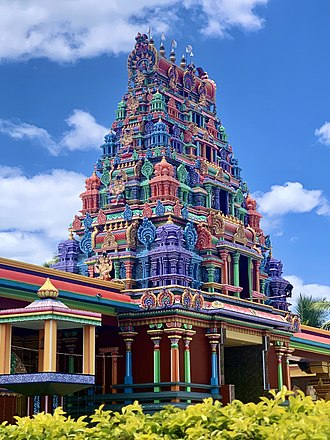
In addition to being one of the oldest Hindu temples outside of India, this temple is also one of the largest in the Pacific region! Its original building had already existed for several decades, but after the Then India Sanmarga Ikya Sangam, or TISI Sangam was formed, activities and community events were popularized at this temple.
Hindu devotees from all over the world traveled to the temple after Shivacharya Mahalinga Gurukkal became the chief priest. Later on, in the late 1970s, a new foundation was laid for a new building, and the temple was expanded to accommodate the growing number of devotees.
Did you know?
The Sri Siva Subramaniya temple was built using ancient Dravidian and Vastu Vedic architectural styles.
5. Comilla Jagannath Temple
Year founded: Early 18th Century
Location of temple: Comilla, Bangladesh
God that the temple is dedicated to: Jagannath
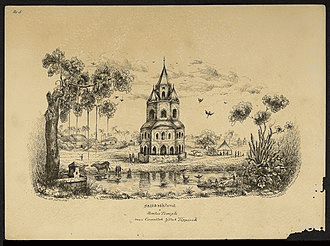
The Comilla Jagannath temple was built in the early 18th century, though we were unable to find its exact date. It was built by King Ratna Manikya II, who was the king of Tripura. It is one of the oldest and most famous temples in Comilla.
An interesting design feature of this temple is that it is constructed in the Bengali style. Bangladeshi temples were known for their distinctive style when it came to designing temples, and this particular temple is no exception, as shown in its terracotta brickwork.
Did you know?
The Comilla Jagannath temple is also referred to as the seventeen-jewel temple or Sateroratna Mandir.
4. Angkor Wat
Year founded: 12th Century
Location of temple: Angkor, Cambodia
God that the temple is dedicated to: Vishnu
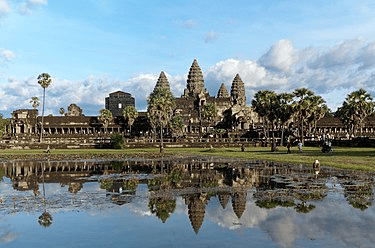
In addition to being one of the oldest Hindu temples outside of India, Angkor Wat is also the largest religious monument in the entire world. This temple was built at King Suryavarman II’s behest, and became a part of his kingdom and state.
The temple’s design combines various elements of Khmer architecture, such as the galleried temple, as well as the temple-mountain. This temple was specifically designed to resemble Mount Meru, which is the Devas home in Hindu mythology. Although this temple was constructed hundreds of years ago, it has been praised by many modern critics for its cohesive design and attention to detail.
Did you know?
Angkor Wat was originally going to be called Parama Viṣṇuloka or Vrah Viṣṇuloka, both of which translate to “the sacred dwelling of Vishnu.”
3. Banteay Samré
Year founded: Early 12th Century
Location of temple: Angkor, Cambodia
God that the temple is dedicated to: Shiva
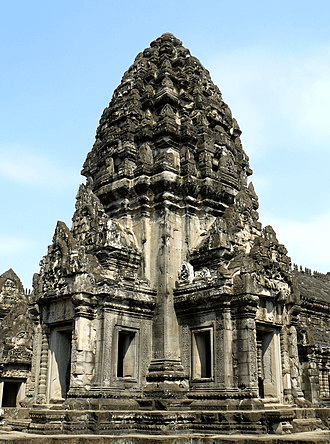
Banteay Samré was built during the king Suryavarman’s reign, and is designed in the traditional Angkor Wat style. It was named Samré in honor of the ancient people of Indochina. An interesting feature of this temple is its design. It has a tower above the shrine that is connected by an antarala.
When approaching the temple, you will see a raised causeway. Historians theorized that this causeway suggested that the temple had a small town within it.
Did you know?
Banteay Samré was restored in the mid 1930s by the architect and archeologist Maurice Glaize.
2. Chau Say Tevoda
Year founded: Mid 12th Century
Location of temple: Angkor, Cambodia
God that the temple is dedicated to: Shiva and Vishnu
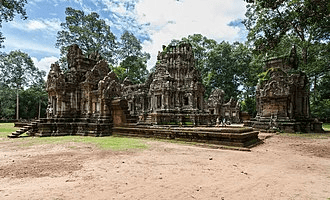
Chau Say Tevoda is another Hindu temple that is located in the Angkor region of Cambodia. Just like the Angkor Wat temple, this one was also built under King Suryavarman II’s reign. It’s interesting to note that although this temple was built under the reign of various Hindu kings, it also features images that reference Buddha.
Chau Say Tevoda’s design is similar to the Hindu temples in India: it was built using a cruciform plan and has four towers. Its central tower also has an attached mandapa and several sculptures of Vishnu and Shiva. It is also worth noting that this temple has a few sculptures of Buddha, but these sculptures are quite badly disfigured.
Did you know?
Chau Say Tevoda was closed for about eight years between 2000 and 2009 and was reopened after being restored in a project that the People’s Republic of China sponsored.
1. Banteay Srei
Year founded: 10th Century
Location of temple: Siem Reap, Cambodia
God that the temple is dedicated to: Shiva and Parvati
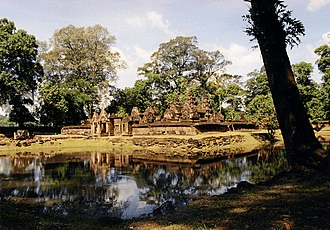
Banteay Srei is a well-known Hindu temple located in Siem Reap, and is dedicated to the deities Shiva and Parvati. It was built primarily using red sandstone, which was a material that allowed its architects and builders to carve elaborate designs into the temple’s walls. It’s interesting to note that this temple’s scale is miniature, which is unusual when considering Angkorian architecture and construction.
This temple was originally called Tribhuvanamaheśvara, which referenced the Shaivite linga and translated to “lord of the threefold world.” Its current name, Bantãy Srĕi translates to citadel of beauty or citadel of women, and references the intricate carvings on the temple’s walls and the scale of its dimensions.
Did you know?
Bantay Srei has three rectangular enclosures, two libraries, and one sanctuary.
Conclusion
In this article, we took you through a list of some of the oldest Hindu temples outside of India. When researching this topic, we discovered that several of these temples are located within Asia itself, especially in countries like Bangladesh, Cambodia, and Japan. It’s interesting to note that the reason these temples are found in countries so close to India is because of kingdoms like the Chola and Vijayanagara empires. Since they were seafaring kingdoms, they were able to expand their domains and spread Hinduism in other parts of the world. We hope you learned something new!







